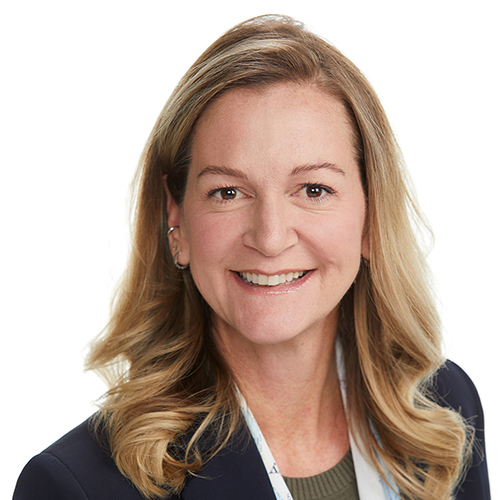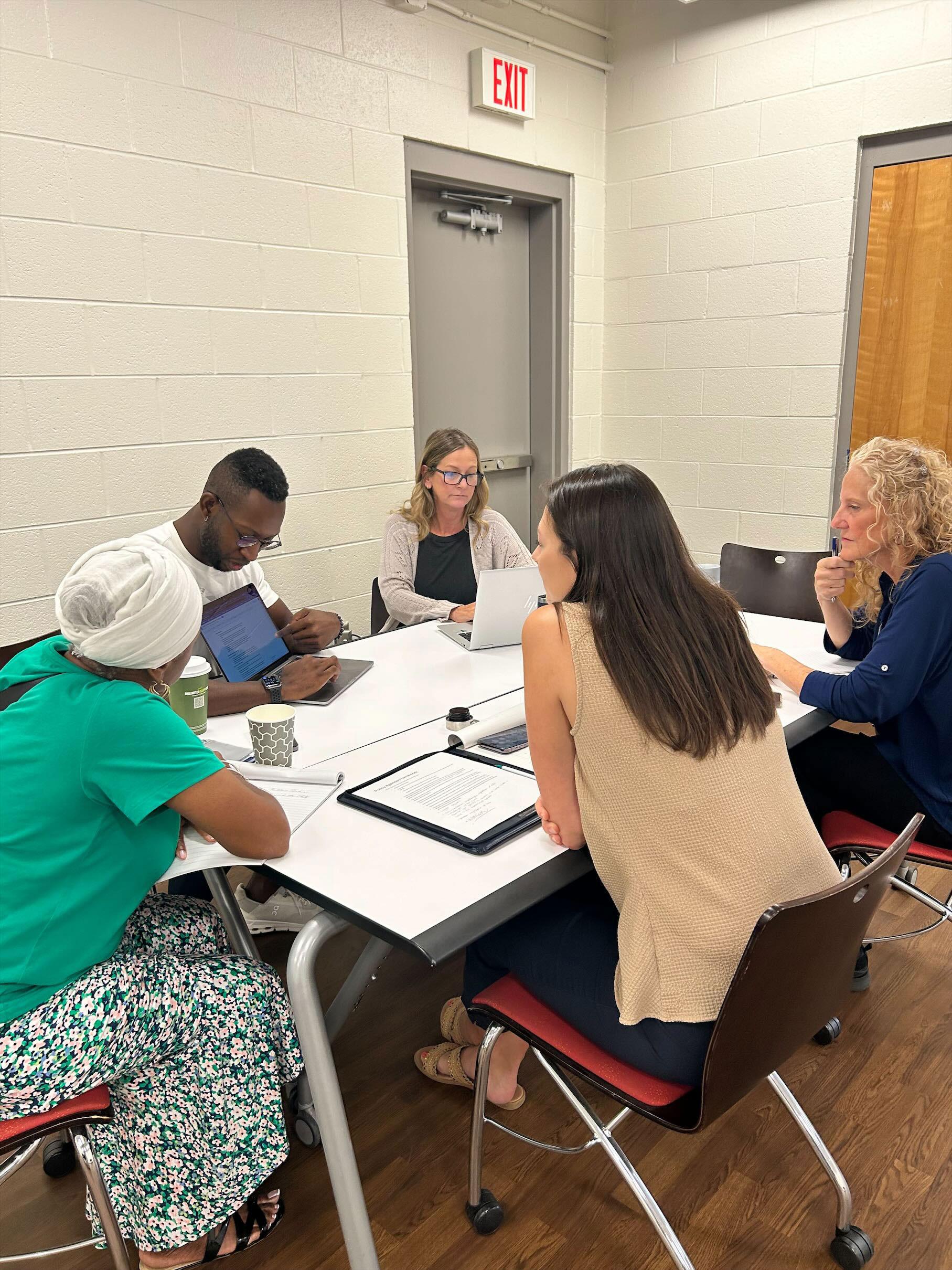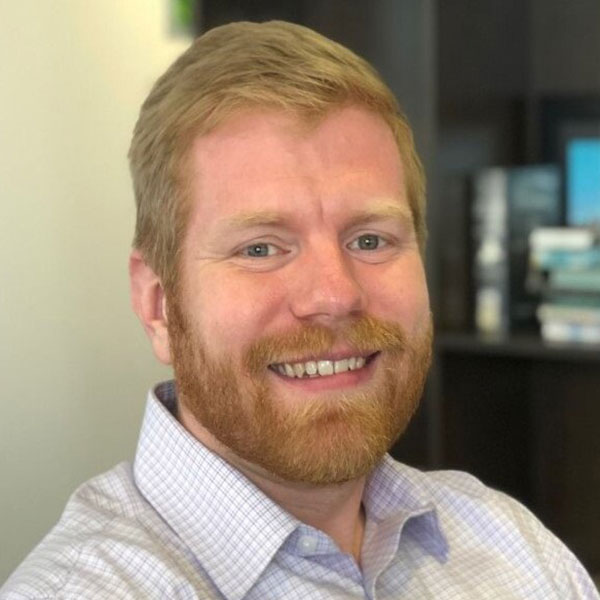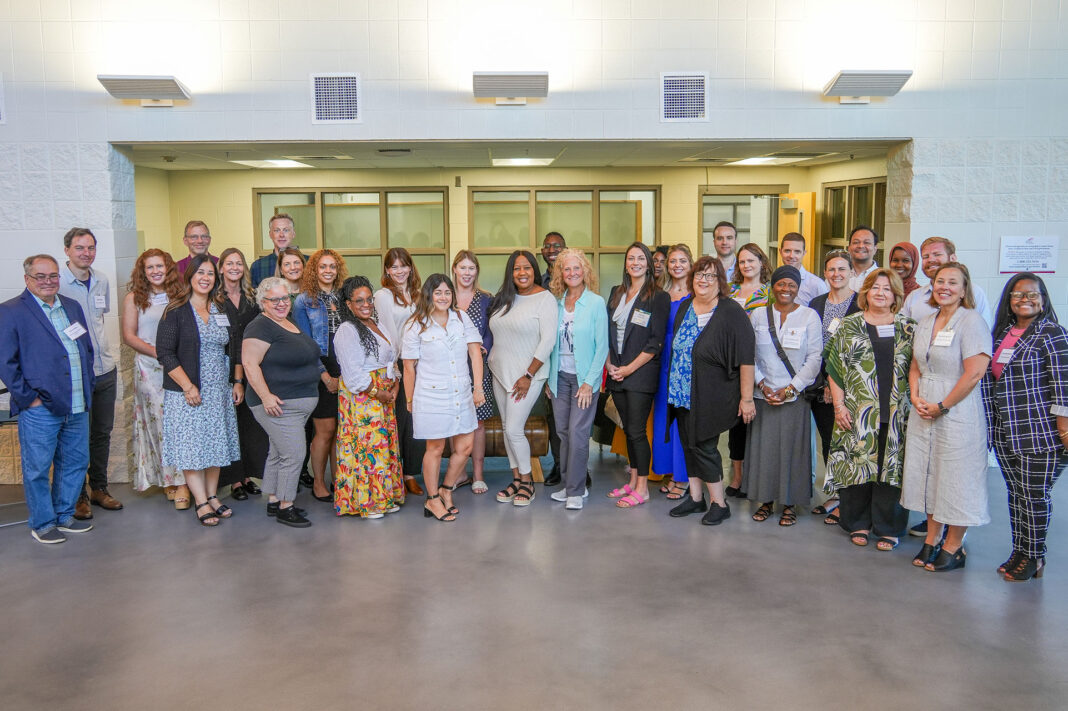For Hannah Reuter at Springfield WORKS’s Bridge to Prosperity pilot program in Massachusetts, $22,000 is a magic number. Reuter and her colleagues think that’s the temporary financial lift it might take for each health care worker in the program to move completely off of public benefits and into household-supporting careers. Having planned for looming benefits cliffs, participants can take a more confident step up into higher-paying roles vital to area hospitals.
Benefits cliffs can arise when someone receiving public assistance accepts a new job or raise, or increases their work hours. Their benefits—including food, housing, health care, child care, or other assistance—may decrease faster than their rising income can make up the difference, leaving them staring down sudden gaps in their economic resources.
Cliffs may affect people who receive benefits and earn up to about $60,000 a year if their income rises. The potential risk to their financial stability can cause people to back away from promising opportunities.
Benefits cliffs pose a risk not only to individual workers who feel they then can’t take on a better job. They also ripple out to impact employers and consumers who depend on skilled employees filling those roles.
“Health care is an industry with high turnover in really critical patient-facing roles,” said Reuter, director of the Bridge to Prosperity pilot program. “There are a lot of health care employers that recognize the cliff effect as a specific barrier to keeping people in those positions or advancing in their careers.”

Bridge to Prosperity is one of dozens of experiments across the country aimed at mitigating workers’ benefits cliffs as their incomes rise and assistance lessens. Each pilot takes into account the benefits systems, employment conditions, and costs of living particular to its region.
Now, leaders from 13 of these regional pilots have come together in a coalition called Beyond the Cliff to share what they have learned and practiced with one another, and then with policymakers, employers, and funders. The pilot leaders know based on their experience that it will cost money to solve this problem. But they hope to show decision-makers that can be money well spent.
“We’re bringing this coalition together to compile what we’ve learned in a way that can translate into a better vision for how public benefits could work,” said Keith Barnes, senior director of Beyond the Cliff. “This is about families that are trying to work to get ahead in a system that’s not working for them.”
Growing awareness of benefits cliffs and experience addressing them
Several state legislatures are now considering bills meant to address the benefits cliff issue. Others have already passed such measures, including the Florida and South Carolina state legislatures.
State, county, and local governments have also taken note, with some prioritizing the issue and contributing funds to pilot programs like those in the coalition. Pilots in some areas are also working closely with employers in heavily impacted industries like health care and hospitality.

“What’s encouraging is there seems to be continued growth and momentum on the need to address the issue.”
– Brittany Birken, director and principal adviser, Atlanta Fed
“What’s encouraging is there seems to be continued growth and momentum on the need to address the issue,” said Brittany Birken, director and principal adviser on the Federal Reserve Bank of Atlanta’s Community and Economic Development team.
The Atlanta Fed’s widely used CLIFF tools allow people receiving benefits to see when they might encounter cliffs based on their particular situation. They can then work with a coach to plan their path past those cliffs.
Recent benefits cliff legislation in Florida and South Carolina requires professionals who counsel people facing cliffs to use such a tool in their client consultations. The CLIFF tools and similar systems drawing on the Atlanta Fed’s Policy Rules Database help decisionmakers see for themselves that benefits-to-income calculations aren’t penciling out for households facing cliffs.
“It’s not a ‘take my word for it,’” said Birken, who also serves as an advisor to the Beyond the Cliff coalition. “The tools model when cliffs occur and what that means for families. You can document clearly the extent to which families may grow financially worse off.”
From very different pilot landscapes emerge shared themes
With focused attention on the issue, the coalition hopes to build an evidence database and elevate emerging best practices.
“We’re asking, what would this ideal process look like for people to move forward economically in ways that support both families and the economy?” said Marielle Lovecchio, director of the Tennessee Alliance for Economic Mobility (TAEM).
The programs, selected from applicants across the country, reflect the diversity of benefits cliffs mitigation approaches. Some, like Bridge to Prosperity, are smaller, highly targeted efforts centered on a vital local workforce. Others, like TAEM’s Our ChanceTN, are multi-county initiatives enrolling hundreds of participants with a wide range of needs.
Still, other pilots focus on participants with at least one similar obstacle. For example, the District of Columbia Department of Human Services’ Career MAP program offers formerly homeless families secure housing and assistance navigating benefits cliffs as they progress toward more stable work opportunities.
Though the pilots vary in focus, funding, and scale, coalition members have identified several common themes as they swap program implementation stories. Three elements rise to the top of the list: family-centered coaching, tools to track and plan for cliffs, and flexible transitional funds.
Taking a tailored approach over the long term
Many benefits cliff mitigation programs pair each participant with a dedicated coach. In addition to one-on-one meetings, coaches link participants to various resources in a pilot’s extended network, such as organizations offering utility or transportation assistance.
“It is still a big leap for folks to think about what it means to leave these benefits and trust that they’ll be better off on the other side of it,” said Geoff King, director of the Career MAP pilot. In that program, every participant has a dedicated navigator they meet with at least monthly.
“The idea is that participants can really build relationships with someone who’s an advocate for them,” added King.
The family-centered coaching approach recognizes each family has its own unique goals and needs, said Lovecchio.

“We have found that family-centered coaching is a more equity-based approach that’s very impactful in supporting families in moving from crisis to thriving.”
– Marielle Lovecchio, Director, Tennessee Alliance for Economic Mobility
Working together, coaches and participants use specialized systems like the Atlanta Fed’s CLIFF tools to map out, track, and adjust over time each participant’s individualized plan across cliffs to their goals.
For example, Massachusetts’ Bridge to Prosperity pilot uses the tools to determine which of three tailored tracks best meets each participant’s needs. Career MAP participants and their coaches use CLIFF tools to lay out a customized family budget to continually reference through the process of moving through cliffs.
Funding flexible enough to cover the expected—and the unexpected
Even with carefully planned and tracked benefits cliff navigation plans, emergencies happen. People facing benefits cliffs often must make ends meet with annual incomes near or below federal poverty guidelines ($31,200 for a family of four in 2024). Households may have little to no savings to cover unplanned expenses.
Pilot programs are designed to account for as many household expense changes as possible, expected or not. Many programs feature a combination of three types of possible payments.
One is a transitional benefit of a regular, set amount meant to temporarily bridge the gap between the benefits participants lose and their rising incomes.
A second type of payments, emergency funds, may be drawn in certain circumstances for sudden expenses or income losses that participants and their coaches can’t plan for. Situations might include a worker suffering an injury that requires a brief time away from the job or family-based child care falling through.
“The participants know what they need,” said Jen Albrecht, who leads another coalition pilot program in her role as workforce development manager for Hennepin County, Minnesota. “Flexible dollars allow our providers to trust the people that they’re serving and do what they need to help them overcome any employment barrier.”
Some pilots, like Career MAP and Bridge to Prosperity, also feature a lump sum that accumulates over a participant’s time in the program. Called a savings bonus, escrow account, or nest egg, this is money participants receive once they complete their journey to their goals.
“In the policy formation phase, themes that we heard again and again were things like, ‘If I’m going to move into safe and better housing, I’m going to need first, last, and security deposit,’” Springfield WORKS’ Reuter said, referring to the upfront payments landlords typically require. “Or, ‘If I’m going to show up to my job on time, I need reliable transportation.’ The savings bonus is really meant to help folks get over that ‘last mile’ set of issues.”
Each pilot has a different system of payments matching participants’ needs. The Bridge to Prosperity program offers an example of how these payments work in practice: Each participant receives a monthly transitional benefit of $300, $500, or $700, according to the track that best fits their navigation plan as informed by the Atlanta Fed’s CLIFF tools. After two years, each participant finishes with a $10,000 savings bonus. For the middle track of participants in the program, the total payments amount to $22,000.

Some pilot program funds are at risk
Pilot leaders stress that effectively mitigating benefits cliffs depends on these carefully tailored elements. The process can be labor-intensive and time-consuming for participants and staff. It can also be expensive. Some coalition members are concerned about where funding might come from in the near future.
Several pilots rely in part on American Rescue Plan Act funds issued in the wake of the COVID-19 pandemic. These limited funds are now running out and some pilot programs are already feeling the squeeze.
In Hennepin County, Minnesota, for example, the Office of Workforce Development’s benefits cliff pilot was initially allocated a combined $2.5 million in property tax and ARPA funds. But in the 2025 budget, the program will lose the ARPA portion of about $1.4 million.
“Our service providers are devastated,” said Albrecht. “They understand and they’ve been graceful, but it really affects what they’re able to do with the participants.”
Other pilot programs rely in part on time-limited funding or money that may be subject to shifts in local or state administration priorities. Given an uncertain long-term funding environment, many pilot leaders are thinking ahead to how they can best keep programs going or scale them up.

“We’re bringing this coalition together to compile what we’ve learned in a way that can translate into a better vision for how public benefits could work.”
– Keith Barnes, Director, Beyond the Cliff
Proving and communicating results
Beyond the Cliff coalition director Barnes noted that these concerns are paramount in the group’s discussions and planning. Evaluation is built into most of the pilots, which can support the case for more permanent benefits cliffs mitigation strategies. The Atlanta Fed has focused on helping the coalition think about that evidence, Birken said.
“The coalition is talking about how to educate different audiences,” she said. “What information and data are needed? How would all of that come together in a more comprehensive package articulating the issues around benefits cliffs to potentially engage others in this work?”
Some coalition members are particularly interested in trying to determine whether the programs help reduce overall benefits spending and grow the tax base as more people move up in their careers. “A big task of ours is trying to quantify as best we can how a fundamental shift in the way we deliver these resources—more upfront and in a more targeted way—can bring us savings in the long run,” said Reuter of Springfield WORKS.
Leveraging individual expertise to build a national agenda
The coalition is still in the early stages of answering these questions. Members are also exploring potential national-level policy ideas like an advanced earned income tax credit and how to involve employers in cliff mitigation strategies.
While much work still lies ahead, members seem energized by the opportunity to talk shop and dream big. Encouraged by the interest in their efforts, they’re aiming for a national strategy to help more families thrive after benefits cliffs.
“We have the right people at the table,” said Tennessee’s Lovecchio. “We have folks who are experts in policy, the economy, and benefits administration. And then we have visionaries and innovators. It really takes both.”
More on benefits cliff


